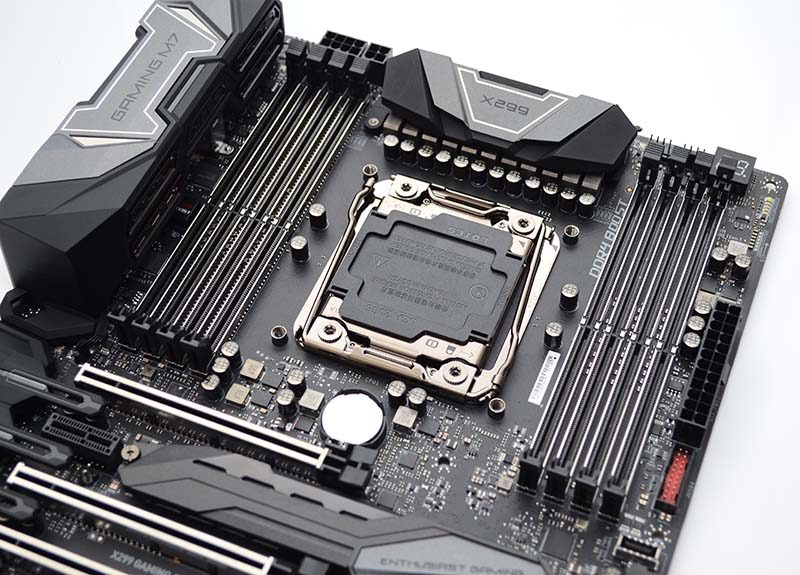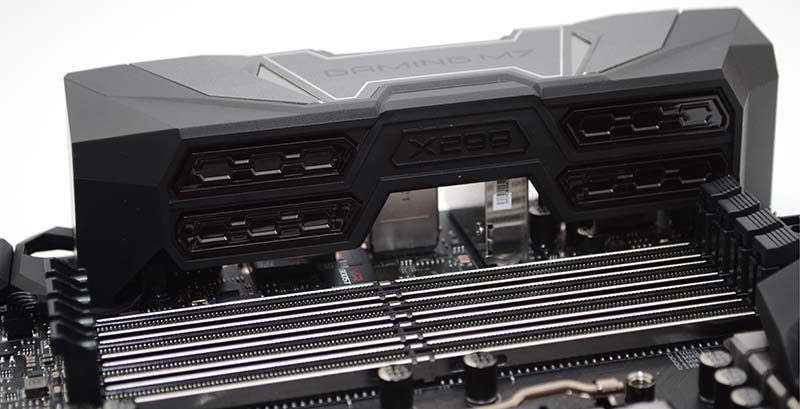MSI X299 Gaming M7 ACK Motherboard Review
Peter Donnell / 7 years ago
A Closer Look
Straight away, you can see this is one gorgeous looking motherboard. Most of the hardware is finished in a matte black, giving it a fairly stealthy finish. However, there are some titanium grey highlights on the heat shields that certainly add to the aesthetics. Of course, it’s only so stealthy looking powered off, as there’s RGB lighting built into those shrouds; although you can always turn the lights off.

Obviously, we’ve got the latest LGA2066 socket, which is freaking massive. That’s surrounded by 8 x DDR4 DIMM slots, each with an Armor design that gives them added durability. Not that I’ve ever had a slot break or that needed Armor, but it looks pretty kick-ass anyway, so who cares.

Power Delivery
Power delivery for the motherboard comes through a fairly comprehensive looking VRM/Choke setup, with durable capacitors that should allow for clean and stable voltages; especially for those who are overclocking.

The board has been upgraded here also. There is an 8-pin CPU power connector, plus an additional 4-pin. These two combined will allow for higher and more stable voltages for the CPU.

The rear I/O comes with a built-in shroud. A lot of motherboards feature this these days, and I love them, as it really cleans up the aesthetics of the motherboard.

Further down, you’ll find all four of the full-size PCIe slot is reinforced with Armor. This makes more sense than the Armor on the DIMM slots, as modern GPUs are freaking huge and heavy, so every little helps. There’s also two smaller PCIe lanes, and some plastic shrouding on the left with RGB lighting for some added cool factor. Another nice feature is the chipset shroud, which extends over the board to provide dual heat spreaders for the M.2 drive mounts.

Overclockers rejoice, as the board also features an on-board BIOS debug LED. This is going to be a huge benefit to problem-solving when things go wrong.

On-board controls!
In addition to a very well equipped bottom row, where you’ll find all the usual headers, there’s also some extra controls. With on-board power and reset buttons, as well as a dial to perform super quick overclocking, you can quickly setup the board how you like it; even if it’s on a test bench.

There are 8 x SATA 6Gbps ports here, as well as U.2, 2 x USB 3.0 and USB 3.0 Type C connectors.

The rear I.O is very well equipped too. Here you’ll find BIOS and system reset controls, so you no longer have to open your chassis to do so. There are built-in Wi-Fi and LAN, obviously. There’s a PS2 connector, 8 X USB ports, and an additional Type-C. Finally, there’s also HD audio jacks, as well as an optical output. Overall, that’s more than most people will ever use.




















